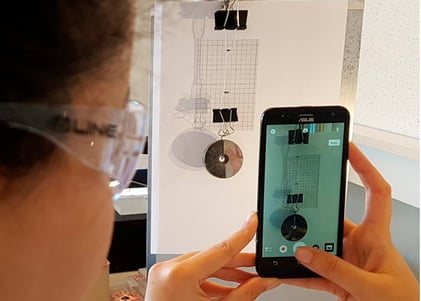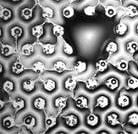Elastomer-related experiments
Finally, my research, through my different resarch topics, has extensively explored elastomers, their surface properties, and their interactions with liquids, coatings, and mechanical stresses. Through various studies, I have developed expertise in surface texturing, metal deposition, microfabrication, and mechanical resistance of elastomers in different applications.
My work on surface-textured elastomers has focused on PDMS surfaces structured using femtosecond laser texturing, particularly in the context of superhydrophobic properties and bacterial adhesion. I have also investigated the deposition of thin metallic coatings on elastomers, including the thermal evaporation of gold and copper on PDMS [29, 33, 39]. This study revealed how different metals grow on a compliant substrate, with gold forming isolated nanoparticles before coalescing, while copper behaves differently due to its adhesion properties [42]. These insights are relevant for applications in flexible electronics and stretchable coatings. Another key area of my research has been the mechanics of elastomeric surfaces. I have studied micropatterned elastic substrates and how their contact mechanics scale with their structural features, demonstrating scale-invariant behavior in these systems [27].
Another application of elastomers in my work involves microcontact printing. I have used Sylgard 184 PDMS to create microstructured stamps, enabling the controlled transfer of patterns onto surfaces. This technique is widely used in soft lithography and biomaterial surface engineering, demonstrating the versatility of PDMS in microfabrication processes [24]. Currently, I am expanding my research beyond classical elastomers to explore the role of elasticity in cavitation erosion resistance. I am studying polyurethane mixed in an epoxy matrix to evaluate how elasticity influences the durability of coatings exposed to cavitation [submitted to Wear].
Beyond research applications, my expertise in elastomers has also led me to design and publish an educational experiment for students to determine the crosslinking density of an elastomer through a mechanical and chemical approach. This study, published in the Journal of Chemical Education, provides a hands-on learning experience for students in physical-chemistry of materials [36].






Surface texture produced at the surface of PDMS by micromolding [42].
Condensation figures condensed on a surface with chemical contrasts (non-wettable hexagonal domains) transfererd on a surface by microcontact printing [24].
Photography of a student measuring with a smartphone the elongation length of an elastomer [36].